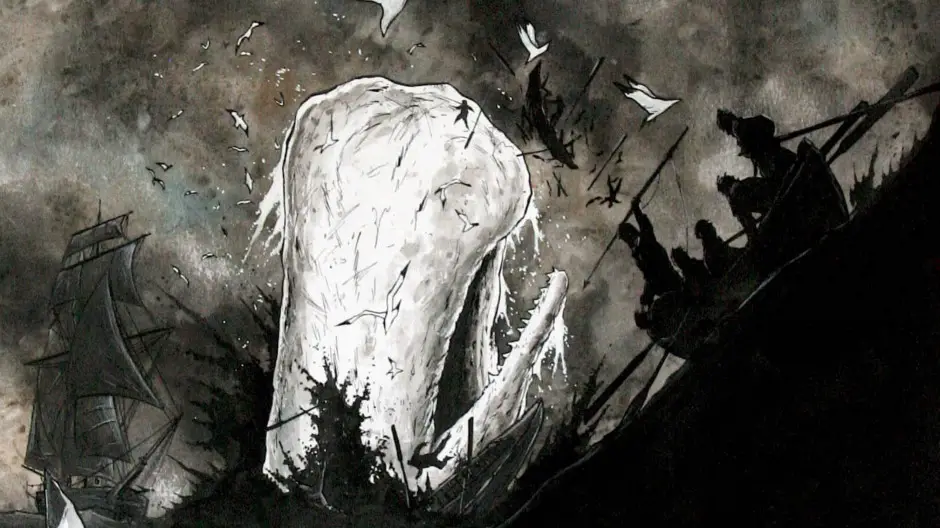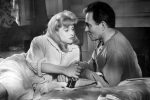Literature buff or not, feeling judged for not reading the so-called “classics” is unavoidable. Classic novels might be a valuable representation of the time in which they were written, but that doesn’t make them relevant today.
In case you’ve never read these five classics, let my article to be your excuse not to.
1. “Moby-Dick,” Herman Melville
Call me tortured — I read the entirety of this book. “Moby-Dick” makes the top of this list due to its lack of payoff at the end of over five hundred pages.
This classic, written by Herman Melville, supposedly recounts a monomaniacal man’s vengeful quest to kill a monstrous whale. Spoiler alert: Captain Ahab doesn’t find “Moby-Dick” until chapter 133 — after a shipload of foreshadowing that Ahab will totally die.
Ishmael and Queequeg’s possibly homoromantic friendship makes up the most enticing part of the whole novel. Their surprisingly strong bond forms despite Ishmael’s initial racial discrimination and fear of Queequeg, a man whom Ishmael as the narrator struggles to ever clearly define as black.
Not to mention the novel completely lacks any female presence. It’s no wonder it took them so long to find “Moby-Dick.”
2. “Romeo and Juliet,” William Shakespeare
It may not be a novel, but boy is “Romeo and Juliet” the most overrated love story of all time. If any of my high school English teachers are reading this — forgive me.
Shakespearean literature deserves respect. His plays contain truths about human nature, humorous hidden innuendos and a beautifully different English language than the one written today. Plus, I don’t think I’m allowed to call a story written in the 1500s unoriginal, but it was still a waste of my time.
Two high school freshman-aged rich kids loved each other so much they killed themselves over it. The plot sounds tragic, and it is, but in 2018 the insane story’s message falls short. Love ultimately halts the ongoing feud between two families — but only after driving several of the play’s main characters to violence and suicide.
The play presumes the multiple deaths result from an unlikely, passionate relationship. I refuse to buy that. Excusing or romanticizing unhealthy emotions and behaviors by mislabeling unhinged people as “full of love” doesn’t pass for cute these days.
3. “Lolita,” Vladimir Nabokov
“Lolita” reminds me of a Shakespearean tragedy, except written in 1955, and more ridiculous. This classic was beautifully written by Nabokov. His use of language makes it a work of art, and he passes on his linguistic trickery to the main character Hubert who, as an adult, has sexual and romantic feelings for his 13-year-old stepdaughter.

I don’t want to read anyone, character or otherwise, attempt to charm their way out of incest and pedophilia ever again. See a damn therapist. Stories with controversial, uncomfortable or graphic topics should not be avoided altogether, though — try “A Clockwork Orange” or “Narrative of the Life of Frederick Douglass” instead.
In these stories, the reader might have to come to terms with violence, power struggle and sexual abuse, but not sympathize with the behaviors. Nabokov portrays Hubert’s pedophiliac impulses as romantic and beautiful, undermining psychological analysis along the way. Yikes.
4. “The Catcher in the Rye,” J. D. Salinger
Cynical and emotional sixteen-year-old Holden Caulfield narrates this classic novel. Can you tell I’ve had it with unstable men?
Caulfield is not the most problematic character, and his dramatic behaviors and inner dialogue honestly reflect the pain and confusion that accompany growing up. But just because anyone can relate to being a hormonal, sensitive teenager doesn’t make the subject matter worth reading about post-puberty.
Caulfield spends so much time criticizing phony adults and the world around him that he struggles to ever better himself. Ironic, considering how desperately he seeks love and attention from anyone at all. In many ways, I sympathize with Caulfield who, from the beginning of the novel, implies that he ends up in a mental institution.
Perhaps psychiatric care catalyzes his eventual optimism about the future, yet the lack of a resolution makes many of the plot points feel empty. What a bummer.
5. “The House of Mirth,” Edith Wharton
Finally — a classic novel centering around a female character. Lily Bart is young, beautiful and grew up enjoying wealth and high status, which she can only maintain by settling down and marrying a man within her elite circle of acquaintances. As a result of gambling and poor financial tactics, Lily loses her status and eventually must join the middle-class and become a hat-maker.
Edith Wharton founded her story on the age-old idea that money can’t buy happiness. She addresses women’s lack of freedom, having to rely upon a husband for protection and security. This message was more powerful and true when she wrote the novel over a century ago.
Today, I find it difficult to sympathize with a character who gambles, lies and manipulates men to maintain a life of a luxury. At her best, Lily remains a privileged member of the middle-class ignoring her friend Selden, her most ideal suitor. Get over yourself, girl.
At the end of the day, any piece of literature can be worthwhile. Classics are classic for a reason, but life is short. Read about the things that make you curious, excite you or offer new perspectives on the hardships you face. Read whatever you want.

















